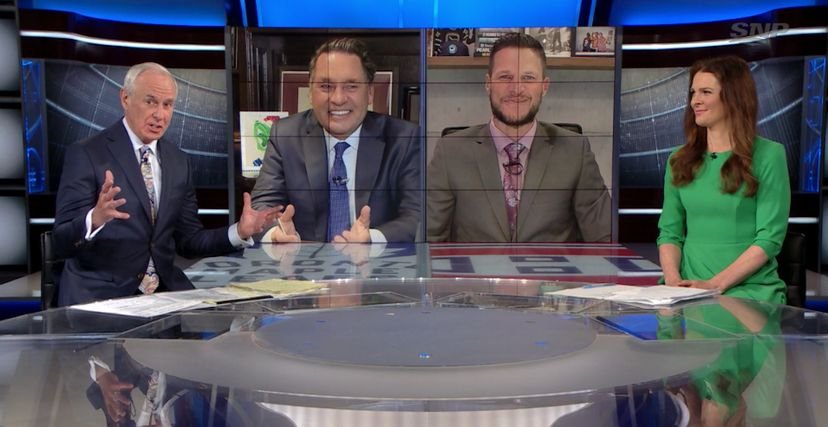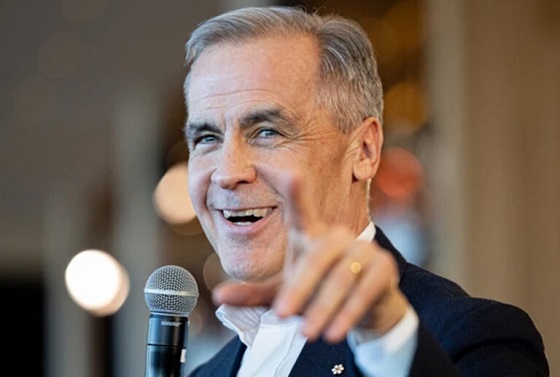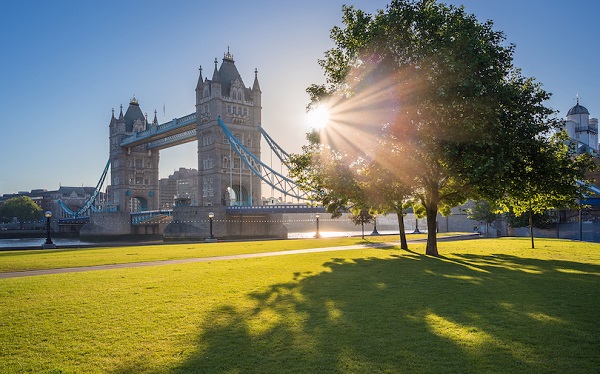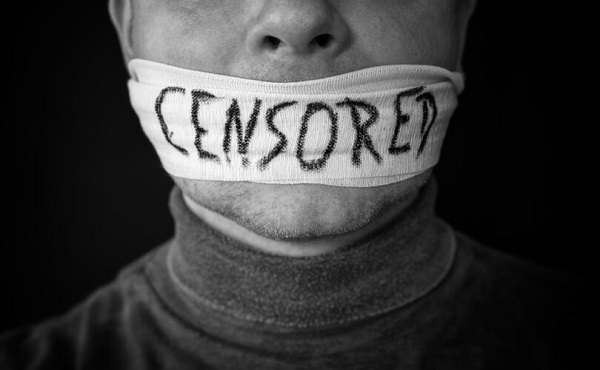Sports
Japan 2020: Team Nigeria’s Shambolic display a lesson to learn or a sign of terrible things to come
Team Nigeria’s Shambolic Display in Japan: A Learning Experience or Bad Portent
When the Nigerian team walked out in mismatched sportswear during the opening ceremony of the 2020 Olympics, many were not surprised and some even predicted such. After all, something similar happened in Rio 2016. The ensuing drama that followed took a lot of people by surprise. First, there was the ongoing drama amongst administrators of the Athletics Federation of Nigeria (AFN) over the Puma sponsorship deal. In 2019, the AFN signed a $2.7 million contract with the German sports brand to produce kits for each athlete. This should have ensured all of the athletes would have more than one pair, but there were some members of the committee who rejected the deal, citing fraud.
In addition to the uniform issue, there was also the disappointment of 10 athletes being disqualified from the games. Their disqualification was due to the athletes’ failure to meet the minimum testing requirements of the Athletics Integrity Unit. The lack of testing is cited as another piece of the incompetence of the administrators and not a mark against the athletes. Despite the protest of those 10 athletes and the acceptance of blame by the Vice President of Nigeria’s athletics body, Fidelis Gadzama, five years of preparation went down the drain.
While most of the sports betting sites in Africa didn’t give much of a chance to Nigeria’s medal hopes, the team managed to leave the Olympic Games with two medals to its name. A Bronze for women’s long jump thanks to Ese Brume, and a Silver earned by freestyle wrestler Blessing Oborududu who fell just short of gold in her final match. Nigeria has not taken home a gold since the 2000 Summer Games in Sydney and it appears they lack the necessary leaders and structure to change that. Unless things start to take a turn in the positive direction, the failures in Tokyo might just be a taste of things to come. All hope is not lost as Nigeria boasts a population of around 200 million people and is one of the biggest economies on the continent of Africa. There are certainly opportunities to have better showings in International sports. Here are some possible solutions on how things can be improved.
Lack of Preparation & Negligence
Before the drama of the 2020 Olympics in Tokyo this summer, the Nigerian team had already developed the wrong type of reputation from the previous games in Rio in 2016. The Olympics men’s football team, who secured the country’s only medal (bronze) at Rio, were left stranded in the United States where the team was camped in preparation for the Olympics. It took the intervention of former Chelsea midfielder, Mikel Obi and an anonymous benefactor to secure a flight to Rio, a few hours before their opening match against Japan.
Mikel Obi initially denied donating a large sum of money to help in the team’s preparation and welfare, but later admitted whilst pointing out the failures of the sports administrators in Nigeria. Some athletes who represented Nigeria in Rio had to source funds publicly to travel to Brazil, while others were left stranded. When asked why the country’s athletes were in such a dilemma and difficulty, Nigeria’s Minister of Sports at the time offered the rhetoric that no one forced the athletes to represent the country.
Who can forget the opening ceremony drama back in Rio 2016, as the official outfits for team Nigeria failed to arrive in Brazil on schedule. The country’s athletes were left walking around the Olympics stadium in mismatched tracksuits. Another typical example of poor preparation on the part of the administrators. While other countries begin preparations for the next Olympic Games after the previous one, Nigeria is notorious for the fire-brigade approach of waiting till the last minute before preparing for the competition. The country’s trials took place too close to the tournament, which leaves some of the athletes way too fatigued and unprepared to have any hope of an impact.
The majority of the athletes who put on the green-white-green of Nigeria at the Olympics are either based outside of the country or are privately funded. Unless the proper infrastructure is put in place in Nigeria itself, the country has no chance of improving its performance at future Olympic competitions. This is all incredibly disheartening when considering how blessed Nigeria is with an abundance of talented and driven people. All one needs to do is look to the talents of Bam Adebayo, Chindu Utah, and Akinradewo Foluke who won medals representing other countries in Tokyo.
Politics & Sports Don’t Mix Well
There’s always an element of politics involved in sports, after all, one needs a certain number of votes to be voted FIFA President or President of the International Olympics Committee (IOC). Politics seem to be taking over the Nigerian sports scene at this point. It seems one must be politically connected before receiving an appointment or a job in any of the sports federations in Nigeria.
A famous Nigerian politician once advised the country’s leaders to separate sports and politics. Just as can be seen with the most successful countries and federations like the US, Great Britain, France, and Germany whose plethora of medals in the just concluded tournament is evidence of the absence of political influence. They cited the performances of the country or local sports teams in major competitions as down to the interest of the leaders in sports. That advice has fallen on deaf ears. The Puma kit drama at the Olympics is a result of internal politics in both the sports ministry and the AFN, and the athletes came off worse from the needless bureaucratic infighting. A faction of the AFN accused the administrators who agreed to the Puma deal of fraud. Despite those officials being cleared of any wrongdoings, high-ranking members of the Nigerian sports ministry still opted against using the hundreds of kits provided by Puma. Instead, they opted to spend state funds to secure kits for the athletes, which in turn led to the lack of sufficient apparel for those athletes.
The Puma deal also had incentives for athletes, as the German sports brand pledged to offer cash rewards of $15,000, $5,000, and $3,000 for Gold, Silver, and Bronze finishes respectively. However, after the debacle of failing to see their branded kits on the Nigeria Olympic team, Puma was forced to cancel the deal, leaving athletes high-and-dry and without a chance of earning such cash rewards.
Another habit of the administrators in the country is promising to offer cash and lucrative rewards to athletes should they achieve a certain goal rather than providing an environment where those athletes can successfully prepare for the games. Because let’s face it, if you offer me $100,000 to cut down a tree and you ensure I’ve no option of sharpening my ax, I’m never going to successfully cut down the tree. Cash rewards are good, but until the Nigerian administrators and government start to provide its athletes with the necessary tools to compete, not only will shambolic outings like Tokyo continue, a host of these athletes are bound to search for better opportunities with other countries.
A Glimmer of Hope
The Nigerian Men’s Basketball team might have exited the Olympics in Tokyo with three losses to Australia, Germany, and Italy with a bottom finish. However, they offered hope of what the country can achieve with effective planning. The Nigerian Men’s Basketball team is sponsored and funded by private individuals. Eight of the team’s players ply their trade in the NBA and the team has a partnership with the Golden State Warriors. The D’Tigers, as they are known, ignited excitement in Nigeria after their shocking victory over the United States and Argentina in their pre-tournament games. The team, led by Golden State Warriors assistant coach Mike Brown, failed to make it to the quarterfinals but showed a glimpse of the great things that can be achieved should this level of preparation be maintained.
Their female counterparts qualified for their second Olympic Games in Tokyo, and despite losing all three group-stage games, the future of the team looks bright. Players like Erica Ogunmike, Elizabeth Balogun, and Kunaiyi Akpannah are all under the age of 24. The possible future additions of Arike Ogunbowale and Chiney Ogunmike should have the makings of a team that can do well in 2024 in Paris.
Conclusion
It wasn’t all doom and gloom for team Nigeria. Enoch Adegoke, 21 years old sprinter, qualified for the finals of the men’s 100m. A hamstring injury meant he couldn’t finish the race, but the potential is there. Nigeria can also look to the likes of Usheoritse Itsekiri, who just narrowly missed a chance to qualify for the 100m due to injury, and Divine Oduduru, who also barely missed the men’s 200m final, as the bright future for Nigeria’s hopes in Paris.
Tobi Amusan exceeded expectations by qualifying for the women’s 100m hurdles final and finishing in fourth place. Amusan’s outstanding display in Tokyo provided a bright spot for the women’s track team whose star athlete, Blessing Okagbare, was disqualified after she tested positive for Human Growth Hormone.
There’s a popular saying in Nigeria “Naija no dey carry last” meaning Nigerians don’t finish last, maybe it’s time for the country’s leaders and administrators to start targeting the first-place finish rather than hoping they don’t finish off as the worst of the worst.
Bruce Dowbiggin
Is HNIC Ready For The Winnipeg Jets To Be Canada’s Heroes?

It’s fair to say everyone in hockey wanted the Winnipeg Jets back in the NHL. They became everyone’s darlings in 2011 when the Atlanta Thrashers, the league’s second stab at a franchise in Georgia, were sold to Canadian interests including businessman David Thomson. (Ed.: Gary Bettman’s try number three in Atlanta is upcoming.).
Yes, the market is tiny. Yes, the arena is too small. Yes, Thomson’s wealth is holding back a sea of inevitability. But sentimentalists remembering the Bobby Hull WHA Jets and the Dale Hawerchuk NHL Jets threw aside their skepticism to welcome back the Jets. The throwback uniforms with their hints at Canada’s air force past were an understated nod to their modest pretensions. It was a perfect story.

The question now, however, is will the same folks get dewey-eyed about the Jets if they become the first Canadian team to win the Stanley Cup since (checks his cards) Montreal and Patrick Roy did it in 1993. It would be helpful in this election year if something were to bind a nation torn apart by politics. The Gordie Howe Elbows Up analogy is more than shopworn, and Terry Fox can only be resurrected so often. So a Cup win might be a welcome salve.
But the approved script has long dictated that the Canadian team to break the schneid should be one of the glamour twins of the NHL’s Canadian content, the Edmonton Oilers or the (gulp) Toronto Maple Leafs. The Oilers and their superstar Connor McDavid barely lost out last spring to Florida while the Leafs, laden with superstars like Auston Matthews and William Nylander, are overdue for a long playoff run.
Hockey Night In Canada positively pants for the chance to gush over these two squads each week. When was the last time Toronto played an afternoon game so HNIC could showcase the Jets? Like, never. Same for the Oilers, who with their glittering stars like McDavid Leon Draisaitl and Ryan Nugent Hopkins are the primary tenants of the doubleheader slot, followed by Calgary. Winnipeg? We’ll get to them.

But there’s going to be no ignoring them in the spring of 2025. The Jets in the northern outpost in Manitoba were the top team in the entire league in 2024-25. They’ll comfortably win the Presidents Cup as the No. 1 squad and have home-ice advantage throughout the playoffs. They have the league’s best goalie in Connor Hellebuyck (an American) and a stable of top scorers led by Kyle Connor and Mark Schiefele. Because Winnipeg is on a lot of No Trade lists, they have built themselves through the draft and thrifty budgeting.
But will the same people who swooned over the Jets in 2011 now find them as adorable if they ruin the Stanley Cup plot lines of the Oilers, Leafs and Ottawa Senators? Will the fans of Canadian teams in Vancouver, Calgary and Montreal not making the postseason take the Jets to their hearts or will they be as phoney as the Mike Myers commercials for the Liberals?
In addition, the Jets will be swamped by national media should they proceed through the playoffs. It’s one thing to carry the expectations of Winnipeg and Manitoba. It’s another to foot the bill for a hockey crazy county. We remember Vancouver’s GM Mike Gillis during the Canucks 2011 Cup run bemoaning the late arrivers of the press trying to critique his team as they made their way through the playoffs.
It will be no picnic for the Jets, however strong they’ve been in the regular season. No one was gunning for them as they might for the Oilers or Leafs. They will now get their opponents’ best game night after night. Hellebuyck has been a top three goalie in the NHL for a while, winning the Vezina Trophy, but his playoff performance hasn’t matched that of his regular-season version.
Already the injury bug that sidelines so many Cup dreams is biting at the Jets. Nikolaj Ehlers collided with a linesman in Saturday’s OT win in Chicago. Defenceman Dylan Samberg is also questionable after stopping a McDavid slap shot with his leg. A rash of injuries has ended the run of many a worthy Cup aspirant in the past. Can Winnipeg’s depth sustain the churn of seven weeks of all-out hockey?
As always for the small-market Jets time is of the essence. Keeping this core together is difficult with large markets lusting after your players. With the NHL salary cap going up it remains a chore to keep their top players. Schiefele and Hellebuyck are tied up longterm, but 40-goal man Connor is a UFA after next season while Ehlers is not signed after this season. Young Cole Perfetti will be an RFA in 2026. Etc.
So how much do Canadians love the Jets if they sneak in and steal the hero role by winning a Canadian Cup? Lets see Ron MacLean pun his way through that one.
Bruce Dowbiggin @dowbboy is the editor of Not The Public Broadcaster A two-time winner of the Gemini Award as Canada’s top television sports broadcaster. His new book Deal With It: The Trades That Stunned The NHL And Changed Hockey is now available on Amazon. Inexact Science: The Six Most Compelling Draft Years In NHL History, his previous book with his son Evan, was voted the seventh-best professional hockey book of all time by bookauthority.org. You can see all his books at brucedowbigginbooks.ca.
Bruce Dowbiggin
Bettman Gives Rogers Keys To The Empire. Nothing Will Change

Good news if you like the way Rogers Sportsnet covers hockey in Canada. You’re about to get a whole lot more of it. In a move that sums up Gary Bettman’s unique broadcast philosophy the NHL has awarded the Canadian TV/ digital/ streaming rights to Rogers for the next 12 years. The price tag? 12 billion U.S. dollars (about $16.B CDN dollars).
While the pattern in modern sports broadcasting rights has been toward sharing the wealth among competing bidders— the NFL has six distinct partners— Bettman the contrarian has opted for a different notion. He’s all in with one Canadian partner, and let his critics STFU.
As opposed to the previous CDN national monopoly awarded to Rogers in 2013 this one bestows national rights in all languages across TV, streaming and digital for all regular-season and playoff games, plus the Stanley Cup Final and all special events. This extends to coverage in all regions. There are some concessions for Rogers to sell limited cutout packages, such as the Monday Night Amazon package they’ve created.
Presuming Pierre Poliievre doesn’t get his way with CBC, Rogers will likely piggyback on their time-sharing agreement for Saturday Hockey Night In Canada to get CBC’s network reach. (There remain many hockey fans who still think CBC has the NHL contract. Go figure.)
Translation: there will be no regional packages for TSN to produce Montreal Canadiens, Ottawa Senators or Toronto Maple Leafs games, for instance. But there will be regional blackouts, because nothing says we are proud of our product like denying it to a larger audience. Conn Smythe would be proud.
At the presser to announce the deal Rogers and Bettman were coy about how much they will charge consumers for the honour of being inundated by content in what now seems likely to be a 36-team league by the time the deal expires. Will costs be added to cable/ satellite packages? How much for streaming? With stories circulating that Rogers massively overbid for the package to get the monopoly it’s apparent that the phone company will be turning over every nickel to make it worthwhile.
Fans are apprehensive and over-saturated with hockey content already. For that reason, the NHL is now desperately looking for ways to lessen the tedium of the 82-game regular schedule with midseason content like the 4 Nations Cup or a World Cup format. In Canada’s hockey-mad environment Rogers will have a passionate market, but even the most fervent fans will only spend so much for their fix.
Already, Rogers is trumpeting its re-acquisition with commercials featuring Ron Maclean doing his breathy feels-like-home voice about how Sportsnet is the natural landing spot for hockey until many of us are dead. Bettman made cooing noises about Rogers’ commitment at the announcement.
But let us cast our minds back to 2013 when the last Rogers/ NHL deal was concocted. We were the sports media columnist at the Mop & Pail at the time and much was made that Rogers would be a technological marvel, re-inventing the way we watched hockey. There would be new camera angles, referee cams, heightened audio, refreshed editorial content etc.

As hockey fans now know Rogers dabbled in the brave new world briefly, blanched at the cost of being creative and largely went back to doing hockey the way it had always been done. Taking no risks. On some regional casts that meant as few as three or four cameras for the action.
But if you were expecting dashboard cameras and drone shots you were sadly disappointed. Similarly there was a brief stab at refreshing the pre-, mid- and postgame content. Hipster George Stromboulopoulos was brought in as a host to attract a larger female audience.
But pretty soon Strombo was gonzo, replaced by the anodyne David Amber (whose dad was once the leader of the journalist union at CBC). Women like former player Jennifer Botterill were brought in to change the gender balance on panels. They then acted pretty much like guys, chalk-talking viewers into numbness. Appointment viewing has become a fallback choice.
The move away for anything controversial came in 2019 with Rogers’ axing of Don Cherry’s Coach’s Corner in a flap over the former coach’s continuing ventures into political or cultural content. Maclean slipped the knife into his meal ticket and continued on the show. After time in limbo, doing location shoots, he was returned full-time to the desk.

As we wrote in June of 2022, the one exception to the standard “serious, sombre, even a touch grim” tone is former defenceman Kevin Bieksa. “Bieksa has been a moveable feast. His insouciance with media has become his ragging on the fellow panelists during intermissions that used to be as much fun as skating in July.” His banter with “insider” Elliotte Friedman is now a lone concession to wit on the show.
Intermissions are numbingly predictable, and Rogers’ stable of analysts and play-by-play announcers outside of HNIC is unchallenging to the orthodoxy of PxP being a radio call over TV pictures. Name one star beside Bieksa that has been produced by Rogers’ “safe” broadcast style since 2013. They’d fit in perfectly in a 1980s hockey broadcast. Now compare it with the lively Amazon broadcasts hosted by Adnan Virk and Andi Petrillo.
This leaves a lingering question. What happens to TSN? Many prefer the editorial and studio profile of TSN on Trade Deadline Day or Free Agent frenzy. TSN locked up its stars such as James Duthie and Bob McKenzie when the last deal was signed. But there isn’t enough live content this time to support keeping a full roster anymore. Who will stay and who will go? (TSN’s president Stewart Johnson is the new commissioner of the CFL).
And with Rogers taking full control of MLSE (Maple Leafs, Raptors, Argos, Toronto FC) TSN is left with the CFL and packages of NFL, golf, tennis, some auto racing and international soccer. Is that enough on which to float a network? There have been rumours that Bell, owner of TSN, is interested in divesting itself of the high cost of sports broadcasting. Should that happen— who has the money to replace them?— the effect will be seismic in Canadian broadcasting.
For now, watch how much pressure the NHL puts on Rogers to up its game. More importantly what will happen when Bettman finally retires and the league has a new vision since 1992? Rogers has sewn up its end. Will the audience go with them?
Bruce Dowbiggin @dowbboy is the editor of Not The Public Broadcaster A two-time winner of the Gemini Award as Canada’s top television sports broadcaster, his new book Deal With It: The Trades That Stunned The NHL And Changed hockey is now available on Amazon. Inexact Science: The Six Most Compelling Draft Years In NHL History, his previous book with his son Evan, was voted the seventh-best professional hockey book of all time by bookauthority.org . His 2004 book Money Players was voted sixth best on the same list, and is available via brucedowbigginbooks.ca.
-

 Business2 days ago
Business2 days agoChinese firm unveils palm-based biometric ID payments, sparking fresh privacy concerns
-

 2025 Federal Election2 days ago
2025 Federal Election2 days agoConservatives promise to ban firing of Canadian federal workers based on COVID jab status
-

 Business1 day ago
Business1 day agoIs Government Inflation Reporting Accurate?
-

 2025 Federal Election1 day ago
2025 Federal Election1 day agoCarney’s Hidden Climate Finance Agenda
-

 International2 days ago
International2 days agoPope Francis Got Canadian History Wrong
-

 Environment2 days ago
Environment2 days agoExperiments to dim sunlight will soon be approved by UK government: report
-

 Censorship Industrial Complex2 days ago
Censorship Industrial Complex2 days agoIs free speech over in the UK? Government censorship reaches frightening new levels
-

 2025 Federal Election1 day ago
2025 Federal Election1 day agoWhen it comes to pipelines, Carney’s words flow both ways





